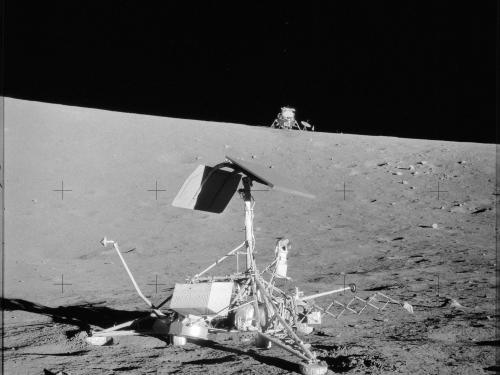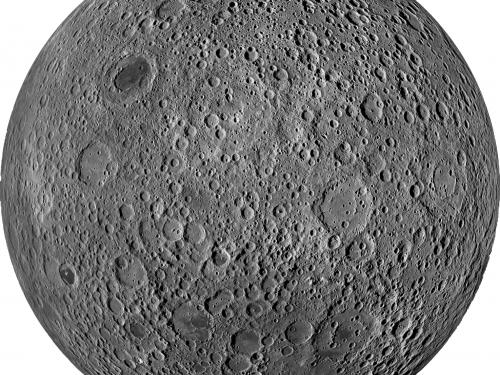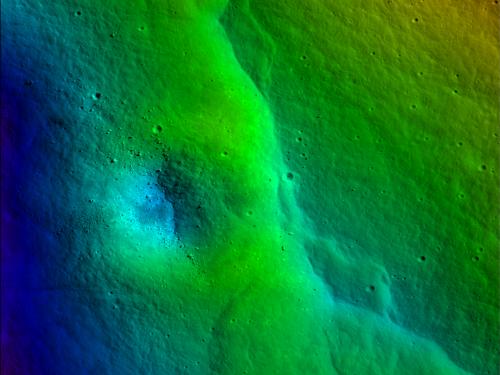
Stories of daring, stories of technological feats, stories of prevailing against the odds ... these are the stories we tell at the National Air and Space Museum. Dive in to the stories below to discover, learn, and be inspired.
Showing 61 - 70 of 91

July 24, 2016
On July 24, 1954, the Naval Research Laboratory (NRL) at Stump Neck, Maryland sent and received the first human voice transmission to be bounced back to Earth from the Moon. Moon bounce, also known as Earth-Moon-Earth (EME) communication, is a technique that sends radio wave transmissions from Earth to the Moon.

July 21, 2016
On July 20, 1969, Neil Armstrong stepped onto the lunar surface, and the U.S. Treasury turned to America’s newest space heroes to fundraise. In 1970, the Advertising Council began one of the Treasury’s longest running Savings Bond promotions, “Take stock in America.” One of the first posters produced for the promotion is a photographic assembly depicting the United States’ conquest of the Moon.

July 15, 2016
“We know it will be a good ride,” Astronaut Neil Armstrong said. He was responding to well wishes from the NASA launch operations manager just 15 seconds before automatic sequence. And he was right. It was a good ride.

June 16, 2016
One of our most enduring and popular exhibits has been a piece of the Moon that you can touch. The rock, on loan from NASA, is one of only a few touchable lunar sample displays in the world. In fact, it was the very first touchable Moon rock exhibit when it opened to the public in 1976.

June 15, 2016
Half a century ago, in February and June 1966, robotic spacecraft first landed on the Moon. I vividly remember those events from my days as a 14-year-old space buff. On February 3, the Soviet Union’s Luna 9 thumped down on the vast lava plain known as Oceanus Procellarum (Ocean of Storms), after a number of failed attempts. A Soviet stamp shows its landing configuration, which used air bags to cushion its fall. On the right is the first picture transmitted, from the turret camera in the cylinder on top.

March 09, 2016
On February 26, 2016, we opened our latest exhibition of imagery, A New Moon Rises, in our Art Gallery.

February 26, 2016
Scientific images can rival those of the most talented artists, a fact that is now on display in A New Moon Rises at our Museum in Washington, DC. Take, for example, an image of Reiner Gamma, a beautiful and strange feature on the Moon that looks as though a tadpole has been painted across the flat surface of Oceanus Procellarum. The image demonstrates the phenomenon of lunar swirls – bright patterns that some scientists believe may result from the solar wind striking the lunar soil. A localized magnetic field anomaly may have given this swirl its peculiar shape. The photo is densely packed with scientific information.

November 06, 2015
I’ve done a lot of “cool” things as an educator at this Museum: performed a solar system dance with Miss America, chatted with astronauts, and given people their first awe-inspiring views through a telescope. But I have to say, my most recent experience was truly out of this world. On Monday, October 19, 2015, I participated in the second Astronomy Night at the White House. This event is designed to get youth excited about astronomy, space exploration, science, and engineering.

September 25, 2015
You may have heard about the “supermoon eclipse” that will happen this Sunday, September 27. Sounds pretty exciting! But what does it mean? Let’s start with the “supermoon” part. The Moon’s orbit around the Earth is not a perfect circle; it’s an ellipse, which means that the distance between the Moon and the Earth changes over the course of a month. When the Moon is in the part of its orbit that brings it closest to Earth, the perigee, it appears larger in our sky.

September 18, 2015
Planetary science is one of those fields of research where you can always count on being surprised. The remarkable terrain of Pluto and Charon in images being sent back by the New Horizons spacecraft certainly qualifies. One of my all-time big surprises is from a recent discovery on an object much closer to home—the Moon.
